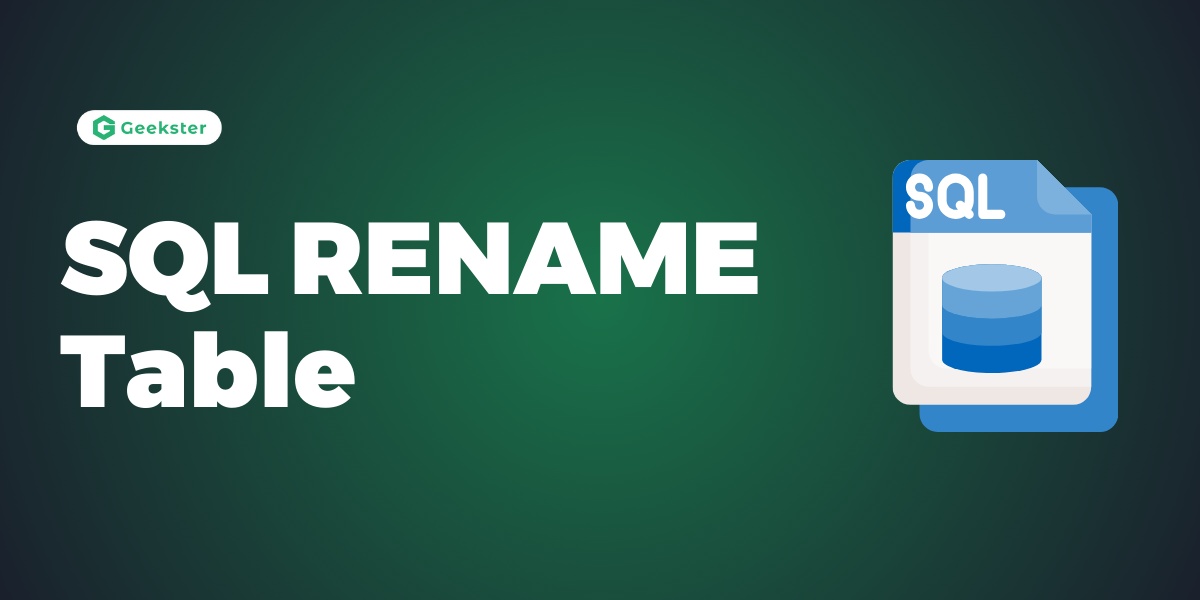Let’s look under SQL RENAME TABLE with an example. Suppose we have two tables in our database named table1 and table2. Although we have an idea about the contents of table1 and table2 anyone who does not know the internal structure of the database will have a hard time guessing what kind of data both tables have. Thus, it is a requirement to rename these tables.
In some situations, database administrators and users want to change the name of the table in the SQL database because they want to give a more relevant name to the table.
Any database user can easily change the name by using the RENAME TABLE and ALTER TABLE statements in Structured Query Language.
SQL provides two ways to rename a MySQL table. You can use either SQL RENAME TABLE or ALTER TABLE statements to change a table name in MySQL RDBMS.
SQL RENAME TABLE Statement
You can change a MySQL table name using the SQL RENAME TABLE statement.
Syntax
RENAME TABLE table_name TO new_table_name;Examples
Here are examples of using the RENAME statement in SQL to rename tables and columns:
Renaming a Table
ALTER TABLE old_table_name RENAME TO new_table_name;
-- Example:
ALTER TABLE employees RENAME TO staff;Renaming a Column
ALTER TABLE table_name RENAME COLUMN old_column_name TO new_column_name;
-- Example:
ALTER TABLE employees RENAME COLUMN emp_name TO full_name;These examples demonstrate how to use the RENAME statement in SQL to change the name of a table or a column. The specific syntax may vary slightly depending on the database management system you’re using, but the general structure remains the same.
Conclusion
In conclusion, the SQL RENAME TABLE statement provides a straightforward way to alter the name of an existing table within a database. By using this statement, database administrators can easily refactor their database schema without losing any existing data or relationships. Whether it’s to reflect changes in business logic, improve naming conventions, or ensure consistency across the database, the RENAME TABLE statement offers flexibility and convenience. However, it’s essential to consider the potential impact on applications and queries that rely on the renamed table, ensuring that any dependencies are updated accordingly. Overall, the RENAME TABLE statement is a valuable tool for managing and maintaining database structures efficiently.
Frequently Asked Questions
The RENAME TABLE statement in SQL is used to change the name of an existing table in a database without altering its structure or data.
No, the RENAME TABLE statement can only rename one table at a time. If you need to rename multiple tables, you’ll have to execute the statement separately for each table.
No, renaming a table using the RENAME TABLE statement does not affect its data or structure. It simply changes the name by which the table is referenced in SQL queries and metadata.
Yes, the new table name must comply with the naming rules enforced by the specific database management system (DBMS) being used. These rules typically include limitations on length, character set, and reserved words.
No, the RENAME TABLE statement only changes the name of the table itself. Any references to the table in other database objects, such as views, stored procedures, or triggers, must be manually updated to reflect the new table name.

